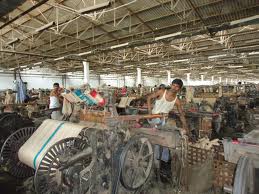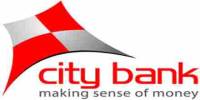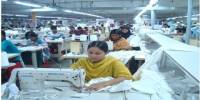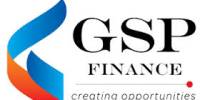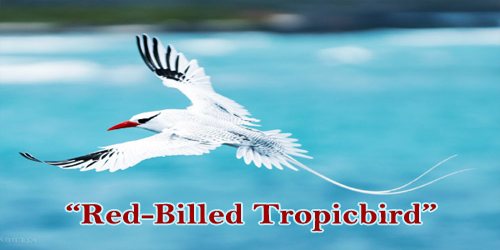INTRODUCTION
Jute Growing Area In Bangladesh
| Legend | ||
| Northern Jute (White and Tossa) | ||
| Soft District Jute (White and Tossa) | ||
| Jat Jute (White and Tossa) | ||
| District Jute (White and Tossa) | ||
| Hard District Jute (White and Tossa) |
Introduction
Jute is the main cash-crop of Bangladesh. In reality Bangladesh is the home of jute. Its contribution towards our economy is very great.
Jute is a kind of fibre. We get it from the bark of the jute plants. Jute grows mainly in Bangladesh. In our country, jute grows in plenty in the districts of greater Mymensingh, Faridpur, Noakhali, Dhaka, Comilla and Pabna. At present India is also trying to produce jute.
Construction works of the Delta Jute Mills have been started in the year 1963 and completed in the year 1965. Production of the Mills has been started in June, 1965. Late Al–Hoj Abdur Rab is the founder Managing Director of the Mill. Now Mrs. Suaiya Begum is the Managing Director of the Mills.
It was the biggest among the Bengali owners Mills of the then pakistan. The Mills total land and area is 60 (Sixty) acres. The mill has got 2 (Two) Gas Turbine generators of 750 K.W. capacity of each power to run the Mills form 1988 and since then no production loss occurred for want of power.
Objective of the study :
As we are the students of marketing department, so we are directly or indirectly involved with business activities. To increase our knowledge we conducted this study tour. We can point out some of our objectives:
# To know the present of the Jute Mills of Bangladesh.
# To know different marketing approaches of Jute mills such as price, promotion, distribution, production etc.
# To find the limitations of the Jute Mill.
# To observe the activities of the Jute Mill.
# To earn practical experience about the Jute Mill.
Method of the study :
Observational research was followed to conduct this study. We have come across so many hard work and effort to get the primary and secondary data. Data collection of the study divided into two divisions:
- Primary data collection
- Secondary data collection
Primary data collection :
The data which are collected through direct survey is called primary data.
Primary data were collected from the following sources :
- Submission of structural questionnaire
- Direct interview with different persons of the organization.
- Direct observation while visiting the factory.
Secondary data collection :
The data which are collected from different publications, books, annual report, internet etc. are called secondary data.
Secondary data were collected form the following sources :
- Company prospectus
- Internet
- Different Publications.
- Books
- Annual report
Limitations of the study :
# Delta Jute Mills Ltd. is a restricted area. That’s why we could not get much information.
# We haven’t enough time to observe the production unit.
# They can’t supply us any product or raw materials.
# We have limited time to write the report.
# They haven’t marketing division. For that reason we can’t know any activities about their marketing.
Company Profile
Organizational Establishment :
Delta Jute Mills have been started in the year 1963 and completed in the year 1965. Production of the mills has been started in June, 1965. This mills is located Chaumuhani, Noakhali.
Company Name : Delta Jute Mills Pvt. Ltd.
Year of Establishment : 1963
Start of Functioning : 1965
Location :
Chawmuhani, Noakhali
Bangladesh.
Delta Jute Mills value of Lands :
Value of 60 Acres of Land: Taka 60,00,00,000.00.
Organizational Structure of Delta
Jute Mills Ltd.
Chairman Mrs. Suraiya Begum |
Managing Director Mrs. Suraiya Begum |
Secretary Frzlul Karim |
Director Mr. Shahid Hossain |
Director Mr. Jahid Hossain |
Director Mr. Abul Kahem |
Director Govt. appointed Director |
Director Mrs. Fatema Akter |
Head Office |
Officers –10 Staff Member –10 Security Staff –7 |
Mill Office |
Officers –10 Staff Member –10 Security Staff –7 Labor 450 |
Production Department
Location of plant Area :
Delta Jute Mills production plant has covering huge area. The Delta Jute Mills is at Chaumuhani in Noakhali, which is planned & with a fine tuned future orientation.
Jute Technology :
Jute Manufacturing in jute millsRaw Jute in the form of bales are processed in Jute mills to produce hessian sacking jute yarn bags and other useful products. Raw jute bales from jute fields or suppliers, carried by trucks are unloaded are stacked in the jute mills go down. The production of jute goods from raw jute processing involves the following steps :
Selection:
In the selection process, raw jute bales are opened to find out any defect and to remove the defective portion from the rnore by experienced workers. Raw jute bales are of two types i.e. 150 kg weight and 180 kg weight with or without top portion cutting. The bales are assorted according to end use like hessian weft, Sacking wrap, Sacking weft etc.
Softening :
In softening process jute morals are made soft and pileable Two method are used for softening; use of softening machine and use of jute good spreader. Generally an emulsion plant with jute softer machine in used to lubricate and gummy raw jute. The emulsion plant consists of gear pump, motor, vat, jet sprayer, nozzles, emulsion tank and the jacket.
Piling and pile breaking :
The main function of pile breaker is to break the pile and serve it to the carding machines. The softener machine out put material carried by pile man through a bile to the pile place for pilling, During piling a superficial moisture penetrates inside fibre and “Thermo fillie” action take place which softener the hard portion of the root. After piling for nearly 24 hours the pile breakers carry the material to the carding machine.
Carding :
Carding is a combining operation where jute reads are splitted and extraneous matters are removed. Jute fibres are formed into ribbon called “Sliver”.
Breaker Carding :
In different jute mills the carding operations has been carried out in two ways:
a) Hand feed breaker carding
b) Rool feed breaker carding
The material after piling more than 24 hours is used in hand feed breaker where the material after piling for 12 hours used in the feed carding. In the Breaker carding machine soften jute after piling is feed by hand in suitable weight.
Finisher Carding :
Finisher carding machine make the sliver more uniform and regular in lenth and weight obtained from the Breaker carding machine. Finisher carding machine is identical to the Breaker carding machine, having more pair of rollers, staves, pinning arrangement and speed.
Jute Drawing And Doubling
Drawing
Drawing is a process for reducing sliver width and thickness by simultaneously mixing 4 to 6 sliver together. There are three types of Drawing Frame machine. In most mills 3 Drawing passage are used in Hession and 2 passages are used in Sacking.
First Drawing :
The silvers obtained from finisher carding machine is fed with four slivers on to the first drawing frame machine. The first drawing frame machine makes blending, equalizing the sliver and doubling two or more sliver, level and provide quantity and color.
Second Drawing :
In second drawing, the Second Drawing Frame machine obtain the silver from the first drawing machine and use six sliver from the First drawing machine and six slivers and deliveries per head. The Second Drawing machine makes more uniform sliver and reduce the jute into a suitable size for third drawing.
Third Drawing :
In the third drawing, the Third Drawing frame machine uses the sliver from second drawing. The Third Drawing is of high speed makes the sliver more crimpled and suitable for spinning.
Spinning_:
Spinning in the process for producing yarn from sliver obtained from Third Drawing. In the spinning process slivers are elongated and fibres are twisted into yarn to impart strength. Spun yearns in the spinning process are wound onto Bobbins.
Winding :
Winding is a process which provides yam as spools and cops for the requirement of beaming and weaving operations. There are two types of winding :
i) Spool winding nad
ii) Cope windin
i) Spool winding :
In Spool winding yarn is produces for warp (the longitudinal yam), spool winding machine consists of a number of spindles. There is wide variation in the number of spindles per machines from one make to another.
Spool winding machine uses the bobbins contain smaller length of yarn. This machine wound the yam into bigger packages known as ‘Spool’. The spool are used in making sheets of yarn to from warp portion used during interlacement of weaving.
ii) Cop Winding :
Cop winding machine obtain yarns from the spinning machines. The spinning bobbins is placed on a suitable pin on top of the cop machine and yarn tension is maintained by means of a small leaver. The yarn on the bobbins are converted into hollow cylindrical package said to be cop.
Beaming :
Beaming process is follows after spool winding. In Beaming operation yarn form spoil is wounded over a beam of proper width and con-ect number of ends to weave jute cloth.
Jute Weaving, Damping and Calendaring
Weaving :
Weaving is a process of interlacement of two series of threads called “Wrap” and “Weft” yarns to produce the fabric of desired quality. There are separate looms for Hessian and Sacking in weaving section. The Hessian looms, shuttle which contacts cops (weft yam) is manually changed. The sacking looms are equipped width ecoloader to load a cop automatically into the shuttle.
Dumping :
Dumping is the process in which the rolled woven cloth is unrolled ad water is sprinkled on it continuously to provide desired moisture. Each roll is generally 104 yards or 95,976 meters. Damping is done manually.
Calendaring:
Calendaring is a process similar to ironing of fabric. After damping the damped fabric passes through pairs of heavy rollers rendering threads in fabric flattened and improve the quality and appearance.
Lapping:
Lapping is the process in which Hessian fabrics are folded into the required size used in “Bale Press” operation on the lapping machine.
Cutting :
Cutting is the process where the sacking cloth is cut to the required the sacking cloth is cut to the required length for making bags for different size such as A-Twill bags and B-Twill bags of 100 kg capacity.
Hemming :
In Hemming process, the raw edges of sacking cloth pieces are shown by folding it with sewing machine.
Herackele Sewing :
In Herackele sewing the sides of sacking cloth cut pieces are shown to make a complete bag.
Bailing :
Bages or Bale processing cloths are pressed compactly according to buyers need.
Delta Jute Mills Pvt. Ltd.
Chowmuhuni, Noakhali
| Product | Selling goods (Ton) | Selling Price |
| Hessian | 94793 | 5,58,85,517.00 |
| Sacking | 2670.88 | 1117,85,925.00 |
| Twine | 868.30 | 3,92,18,769.00 |
| Total | 4487.11 | 20,68,63,212.00 |
Chart : Jute Processing in Jute Mills
Jute bales in Godown |
Selection |
Softning |
Piling Conditioning |
Carding (Breaker, Inter, Finsher) |
Drawing and Doubling (First drawing, second Drawing Third Drawing) |
Spining |
Winding |
Damping |
Calendaring |
Hessain |
Lapping |
Sacking |
Cutting |
Sewing |
Bunding |
Saclomg Hydrolity Press |
Quality Control Department :
Delta Jute Mills has developed and promoted a quality conscious culture amongst its workmen and staff. Dedicating to this philosophy, the independent Directorate of Research and Quality control of Delta Jute Mills Pvt. Ltd. monitor through its well equipped QC units in every mills all stages of production of Jute goods to keep these in conformity with the international standard as well as to buyer’s specification. Clearance of quality achievement is a prerequisite for shipment of each and every consignment. Besides, buyers are free to appoint any internationally reputed surveyor for shipment inspection of their goods at their own cost.
Use of the Goods
Jute is the main cash crop of Bangladesh In reality Bangladesh is the home of Jute. Its contribution towards our economy is very great. Jute goods can ideally be used as :
- Ø Bags and sacks for packing almost all kinds of agricultural produces, minerals, cement etc.
- Ø Packs of or packing wool and cotton.
- Ø Wrapping materials/ fabrics.
- Ø Carrier and backing fabric for carpel and linoleum.
- Ø Cordage and trines
- Cloth for mine ventilation and partition.
- Ø Filling material in cable.
- Ø Roofing and floor cornering apparel
- Ø Footwear lining
- Ø Wall covering and furnishing fabric, m. Fashion accessories.
- Ø Soil erosion control fabric and many more.
MARKETING
MIX ANALYSIS
According to Philip kotler :
The set of controllable tactical marketing tools product, price, place and promotion- that the firm blends to produce the response it wants in the target market. The marketing mix consists of everything the firm earn do to influence the demand for its product.
Marketing mix analysis :
Product :
Product means the good and services combination the company offers to the target market. Anything that can be offered to a market for attention, acquisition, us or consumption that might satisfy a want or need.
Delt a Jute Mills produce a various types of product from Jute, like-Hessian, sacking, yarn. They collects their raw materials from Dinajpur, Rangpur, Faridpur, Sirajgonj etc. In the manufacturing process the machines which used are brought from Japan and China. In their manufacturing line, there is no more new product. In their
Products Variety Quality Features Services |
Price List Price Discounts Allowance Payment Period Credit Terms |
Promotion Sales Promotion Public Relation
|
Place Channels Coverage Location Inventory Transportation Logistics
|
Target Customers |
manufacturing they try to maintain their products quality. 100% of the products are exported to various country
Product Mix:
Jute is lingo cellulose baste fiber. Carbon, hydrogen and oxygen are its major chemical elements. Cellulose, herm cellulose, lignin are us principal constituent components. Thus, it is similar to cotton and wood: The R & D organizations and the scientists have been fully eseplgiting it’s different advantages for production of high value added industrial products. It is very encouraging that a wide- range of diversified jute products can be manufactured with multi-fiber concept through vertical and horizontal extension for divergent and uses:
Following are the jute goods can ideally be uses as:
- Bags and sacks for packing almost ail kinds of agricultural produces, minerals, cements etc.
- Packs for packing wool and cotton,
- Wrapping materials/fabrics,
- Carrier and backing far brie for carpet and linoleum,
- Cordage and twines,
- Webbing to cover inner springs in auto seats and upholster furniture,
- Cargo separator in ship,
- Cloth for mine ventilation and partition,
- Filling material in cable,
- Roofing and floor covering apparels,
- Footwear lining,
- Wall covering and furnishing fabric, M. fashion accessories,
- Soil. erosion control fabric,
- Raw materials for pharmaceutical/ cosmetic/paper and textile industries etc.
- Handicrafts, toys, paper stationary live envelopes, cards, writing pads.
- Soft luggage, Travel accessories, utility articles along with various home textiles.
- Jute blanket, Jute and other textile blended blanked, jackets, warm cloths and many more…
Jute, having been die most environment friendly natural fibre because of its inherent unique properties has counts of advantages over other man-made artificial polymer fibre products.
Delta Jute mills ltd is producing the following items:
- Jute Bags
- Hessian cloth.
- Jute Yearn
Products in detail :
Jute Begs: standard B. Twill 44″x26.5’V 2.25 Lbs
Jute Bags : Binola 44″x 26.57 2.00 Lbs
& other sizes as per instruction.
Hessian Cloth : 45” x 1102x 45”
54” x 102 x 40”
45”902×45”
45”x160x45”
Jute Yarn : 81bs/ 2 Ply
11 Ibs/ 2 Ply
121bs/2Ply
13 Ibs/ 1 Ply
13 Ibs/2 Ply
16 Ibs/ 1 Ply
The mills are producing the following qualities of Hessian sacking and twine goods :
- 72 / 10 oz, 11´12
- 54 / 10 oz, 11´12
- 50 / 10 oz, 11´12
- 48 / 10 oz, 11´12
- 45 / 10 oz, 11´12
- 45 / 9 oz, 9´10
- 42 / 10 oz, 11´12
- 40 / 10 oz, 11´12
- 40 / 8 oz, 9´10
- 40 / 7 oz, 9´10
SACKING
- Std. B. Twills Bags = 44´26.5, 2.25 Lbs. P/Bags
Ex: 26.5/14.24 oz, 6´8.
- Sugar Twill Bags = 44´28, 2.58 Lbs. P´Bags
Ex: 28´14.56 oz, 6´8.
- B nola B.Twills Bags = 44´26.5, 2 Lbs. P´Bags
Ex: 26.5/12.65 oz, 6´7.
Twine :
- 8 Lbs/2 ply = CB.
- 9 Lbs/1 ply = CB.
- 9 Lbs/2 ply = CB.
- 9.60 Lbs/2 ply = CB.
- 9 Lbs/2 ply = CB.
- 10 Lbs/1 ply = CB.
- 10 Lbs/2 ply = CB.
- 11 Lbs/1 ply = CB.
- 11 Lbs/2 ply = CB.
- 12 Lbs/2 ply = CB.
- 12 Lbs/2 ply = CB.
- 13 Lbs/1 ply = CB.
- 13 Lbs/2 ply = CB.
- 14 Lbs/1 ply = CB.
- 14 Lbs/2 ply = HC.
- 15 Lbs/1 ply = CB.
- 15 Lbs/2 ply = HC.
- 16 Lbs/1 ply = CB.
- 16 Lbs/2 ply = HC.
Price :
Price is the amount of money customers have to pay to obtain the product or service.
DELTA JUTE MILLS LTD. Basically charged its price of goods on cost based pricing method.
The simplest pricing method is cost based pricing adding a standard markup to the cost of the products. In some cases value based pricing method is also applied here. Value based pricing based on buyer’s perceptions of value rather than on the seller cost.
For Example :
Raw materials of jute and jute goods :
Grade A = Tk. 700–800 per mound.
Grade B = Tk. 100 per mound.
DELTA. JUTE MILLS LTD. Exports its products on the basis of buyers demand, expectation and price level.
There is on effect on exchange rate fluctuation inflation or deflation because DELTA JUTE MILLS LTD. exports indirectly or through agent.
Price List
Ref No. Delta Jute mills Ltd./PC-PL/0907135/50
Date 10/09/2007
| HESSIAN: | ||||
| Prices of all Hessian cloth and bags are to be calculated using following basis price: | ||||
| Quality | PXS | Packing | Shipment | Price |
| 40/10oz/40 Normal | 11X12 | 2000 Yds. | Sep07 – Dec’07 | 24.50 |
| 40/10oz/40 Food Grade | 11X12 | 2000 Yds. | Sep07 – Dec’07 | 26.50 |
| SACKING: | ||||
| Prices of all Sacking bags and cloth are to be calculated using following basis price: | ||||
| Quality | PXS | Packing | Shipment | Price |
| Std. B. Twills Normal | 6X8 | 300 Bags | Sep07 – Dec’07 | 62.00 |
| Std. B. Twills Food Grade | 6X8 | 300 Bags | Sep07 – Dec’07 | 64.00 |
| CBC: | ||||
| A. Prices of following quality of CBC is as under: | ||||
| Quality | PXS | Shipment | Price | |
| 163.5/5.5oz/36 | 9X8 | Sep07 – Dec’07 | 63.00 | |
| B. Prices of all other CBC are to be calculated using following basis price: | ||||
| Quality | PXS | Shipment | Price | |
| 150/5.5oz/36 | 9X8 | Sep07 – Dec’07 | 59.00 | |
| JUTE SOIL SAVER: | ||||
| Price of following quality of Jute Soil Saver is as under: | ||||
| Quality | PXS | Shipment | Price | |
| 48″- 1.22lbs/Yd. | 6.5X4.5/10cm | Sep07 – Dec’07 | 23.00 | |
Notes : |
1. Prices given above are in US Dollars per 100 Yds/Bags FOB Bangladesh Ports.
2. Differential Chart issued by Delta Jute Mills Ltd. on the 3rd Oct’96 along with its subsequent amendments will be applicable for price differentials.
3. Domestic price may be obtained from Delta Jute Mills Ltd. Local Sales Desk.
4. Prices will remain unchanged until further orders.
Promotion :
Promotion means activities that communicate the merits of the product and persuade target customers to by it.
DELTA JUTE MILLS LTD. Influence its employee by giving promotion and other facilities on the basis of annual performance.
They informed us that they have some public relation activities like–contribution to mosque ,school, madrasha and some other social organizations.
Distribution/Place:
Place includes company activities that make the product available to target consumers.
DELTA JUTE MILLS LTD. export their goods through agent middleman, basically they use domestic based export marketing strategy. Local buyer comes to the factory and submit their order and then collect raw materials from different sources and then supply according to the order of the buyer, finally buyer export to the foreign market. Actually, DELTA JUTE MILLS LTD. has no export department.
The distribution channel of Delta Jute Mills Ltd. is as follows:
DELTA JUTE MILLS LTD |
v Local buyer v Agent Middleman v Domestic Based Export marketing |
Foreign market Iran, canada, US. India |
According to the Philip kotler and Gary Armstrong:
To plan effective marketing strategies, the company needs to find out all it can about its competitors. It must constantly compare its marketing strategies, products, prices, channels and promotion can those of close competitors. In this way the company can find areas of potential competitive advantages and disadvantages. Competitor analysis involves first identifying and assessing competitors and then selecting which to attack or avoid.
Companies of India, and China are competitors competitor of this company. They have no competitor in Bangladesh. For this reason, the company always compete with India and China.
ADMINISTRATION
AND
MARKETING DEPARTMENT
Administration and Marketing Department
Delta Jute Mills have an administration department at Noakhali, Where they do their marketing activities. They don’t have any particular marketing department. They totally depend on their own order. They don’t have any research and quality control department. They don’t follow any specific marketing and promotional strategy.
Delta Jute Mills Ltd. is a 100% export oriented company.
Motivating Activities :
If any employee of Delta Jute Mills works for over time, they will get extra money. Besides, there are some other facilities for children. They have fully equipt medical center, Primary and High School, Madrasa, College, Orphanage and residence for their workers
Human resource department
Human resource management is comprised of the staffing, development, motivation and maintenance functions. Each of these functions, however, is affected by external influences.
The mill is creating jobs for over 1000 people. Most of them are local.
Welfare of the mills staff members and workers is given top most priority and to achieve this the following welfare facilities have been made available within the mills.
There are 1500 employees are working in Delta Jute Mills. Production Manager received a training from India. There is a registered trade union (C B A). The employees receives occasional bonus as per promotional policy.
The list of officers, office stuff, security stuff and laborers, are as a follows:
1) Head office : Officers………………….l0 nos.
Staff……………………..10 nos.
Security Staff…………7 nos.
2) Mills Office: Officers…………………28 nos.
Staff Members…………50 nos. Security staff……………34 nos.
Labourer…………………. 450 nos.
Total = 562 nos.
Total: (27+562) = 589 nos.
Safety Measure:
Strict Safety codes and regulations are not followed in this factory. All modern and sophisticated safety equipments have been procured and are in use. Fire fighting equipments are not available to give their services as when required.
Medical Centre and Medical Facilities:
The company provides free medical facilities to all officers and staffs including their departments. They have fully equipped Doctors. Medical attendants are available to provide service round the clock in case of accident.
Canteen facilities:
The company provides canteen facilities for the bachelors. It is known as Bachelor Mess.
Residential Facilities:
The company provides residential facilities for the married officers. They provide fully furnished accommodation facilities for married officers.
Educational facilities for children:
The company has primary and high school. The institution dilever proper education of the children of all level of staff.
Delta Jute Mills Ltd. And Environment
All the products of Delta Jute Mills Ltd. are manufactured from natural agro-based raw fibers of jute. In the long process of manufacturing the products depending on their usability, only a small amount of mineral oil or vegetable oil is used to meet their processing demand. Besides, a hygienically accepted and adaptable amount of preservative is also used. These additives, in fact, play no role in alteration of the very innate properties of jute the mother nature imparted in it. Moreover, in the entire processing maneuver, the raw materials are not subjected to any extreme physico-chemical treatment and thus it is just like getting the same input materials in their ultimate and products. This made jute goods unique as an environment friendly product for which its application in various specified and unspecified fields never poised threat to create natural imbalanced.
Jute being purely biodegradable, perishes naturally after doing its duty superbly. It does not plug like other man made aligned product, the natural pores of the soil and thus does not impede in maintaining the natural process of soil physiology using jute goods thus means doing the things without making harm to nature. Mother earth, now plunged into an environmental crisis, wants us all to be more caring and loving to her. Jute products, in other words, help in contributing to this human obligation of the world concern. DELTA JUTE MILLS LTD. as the world’s single biggest state owned manufacturing and exporting.
Positive
Jute fabric be stattred:
The hairy surface of jute fabric gives it a capacity grip any surface it comes in contact with they can for this reason be stadned high wide without any risk of slippage.
Limensinal Stability:
Under stress Jute extends only 0.5% to its stable form and so gives wonderful limensinal stability.
Biodegradable:
Jute being natural is biodegradable. It does not plug the natural pore of the eart soil and surface.
Burning Wood:
When burned it emits the same fume as a burning wood as we know, is nothing dangerous.
Hygrosceo:
Jute being hygrosco die and anriferous permits normal breathing and humidity to the contents and so ensures their storage without deterioration.
Quality product:
They are producing quality product.
Final consumer:
Their activities do not affect the income level of the final consumer.
Skilled manpower:
Most of the staff are skilled and experienced.
Environment pollution:
Mills do not have environmental pollution.
Govt. facility:
They have access to Govt. facilities
NEGATIVE ANALYSIS
Negative
Departments:
They don’t have any marketing and promotion departments.
Training:
They don’t have any training department for the capacity building of the employees.
Competitors:
They don’t have any competitor in the country.
Motivational strategy:
They have very little motivational strategy for their employees.
Expiry date:
They don’t use manufacturing and expiry date of their products.
Political problems:
Many political problems hinder their activities.
Discount or incentive:
In selling products the mills do not have provision for discount or incentive.
Financially Solvent:
The company is not enough financially solvent enough.
Adequate:
Product is not adequate as compared to demand.
RECOMMENDATIONS
Delta Jute Mills Pvt. Ltd. and the ministry of Textile, Government of Bangladesh asked the Department of Industrial Engineering and Management of BUET to carry out a comprehensive study and suggest strategies for improvement for productivity in the jute industry in 1999. The terms of references indicated by Delta Jute Mills Pvt. Ltd. included the following :
1) Assessment of the present productivity of labour and formulation of a strategy or its improvement.
2) Assessment of the productivity of equipment an machinery /technology and formulation of a strategy for improving the same.
3) Assessment of the various performance parameters, e.g. resource efficiency, energy efficiency, wastage norms etc. and formulation of a strategy for improving them.
Risk Analysis
In evaluating a capital budgeting proposal, the firm should recognize that the forecast return may or may not be achieved. This is the element of risk in the decision making process. Risk may be defined as the likelihood that the actual return from an investment will be less than the forecast return. Stated, differently it’s the variability of return from an investment.
There are many ways to measure risk. Three methods are commonly used.
1. Beta coefficient
2. Standard Deviation
3. Subject Estimation
There are two types of risk in a company. They are
* Business Risk
* Financial Risk
Business risk
This is defined as the chance that the firm will not have ability to compete successfully with the assets that it purchases. As an example, the firm may acquire a machine that may not operate properly, that may produce salable products, or that may face other operating or marketing difficulties that cause losses. Any operational problems are classed as business risk.
Financial risk
This the chance that an investment will not generate sufficient cash flow either to cover interest payments or money borrowed to finance it or principal repayments on the debt or to provide profits to the firm. If the firm falls short of its return goal, it may be able to cover operating expenses but not the financing cost of the original investment
Findings
- Delta Jute Mills Ltd. is a 100% export oriented company.
- They don’t have any research and quality control department.
- They don’t follow any specific marketing and promotional strategy.
- They have fully equipt medical centre, primary and high School, madrasa, college an orphanage and residence for their workers.
- It his ISO certificate.
- Their information system is poor.
- Delta Jute mills do not use modern technology.
- They provide foreign training for managers but not for employees.
The negative aspects of the company as we also found can be pointed out as follows:
- Delta Jute Mills Ltd. total land and Area is 60 ACRES they don’t have any supply chain management system in abroad.
- There is no manufacturing and expiry date of their product.
- There is no transport facility for the general workers.
- Delta Jute Mills Ltd. has no subsidiary organization.
- Machineries are back dated, basically for manud Production line.
- Lack of promotional activities.
- Lack of variation in products.
- No group insurance.
- Lack of laboratory facilities.
- Unknown about their competitors.
- Economical situation of Dalta Jute Mills Ltd. is not in good form.
- During production period the factory environment becomes very noisy.
Conclusion
Delta Jute Mills is the oldest factory. By surveying this company we get practical knowledge about the organization system of the company which will help us in our professional life. The company in the national economy by export jute and jute goods. Saving earned foreign exchange to a great extent. Above all, this report may help all concerned people.
